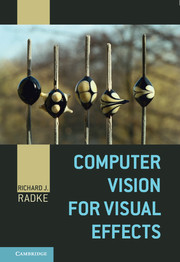Book contents
3 - Image Compositing and Editing
Published online by Cambridge University Press: 05 December 2012
Summary
In this chapter, we discuss image compositing and editing, the manipulation of a single image or the combination of elements from multiple sources to make a convincing final image. Like image matting, image compositing and editing are pervasive in modern TV and filmmaking. Virtually every frame of a blockbuster movie is a combination of multiple elements. We can think of compositing as the inverse of matting: putting images together instead of pulling them apart. Consequently, the problems we consider are generally easier to solve and require less human intervention.
In the simplest case, we may just want to place a foreground object extracted by matting onto a different background image. As we saw in Chapter 2, obtaining high-quality mattes is possible using a variety of algorithms, and new images made using the compositing equation (2.3) generally look very good. On the other hand, a fair amount of user interaction is often required to obtain these mattes – for example, heuristically combining different color channels, painting an intricate trimap, or scribbling and rescribbling to refine a matte. The algorithms in the first half of this chapter take a different approach: the user roughly outlines an object in a source image to be removed and recomposited into a target image, and the algorithm automatically estimates a good blend between the object and its new background without explicitly requiring a matte. These “drag-and-drop”-style algorithms could potentially save a lot of manual effort.
Information
- Type
- Chapter
- Information
- Computer Vision for Visual Effects , pp. 55 - 106Publisher: Cambridge University PressPrint publication year: 2012
